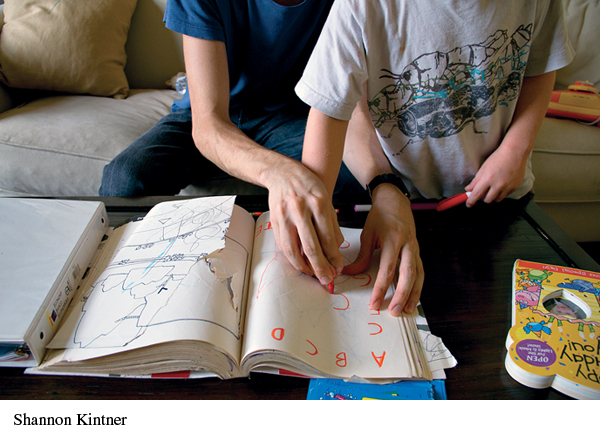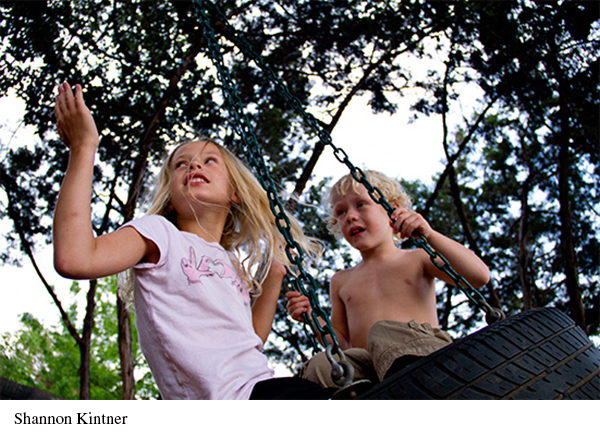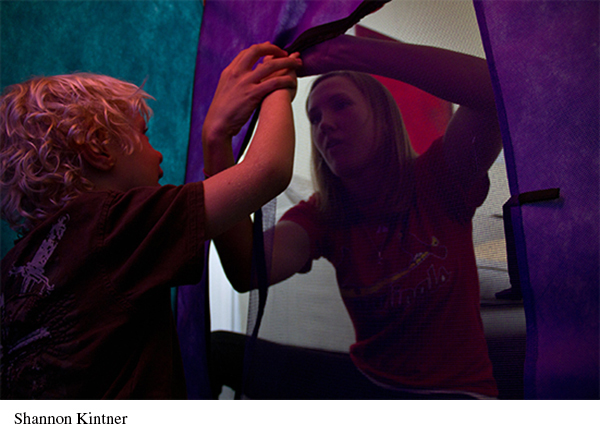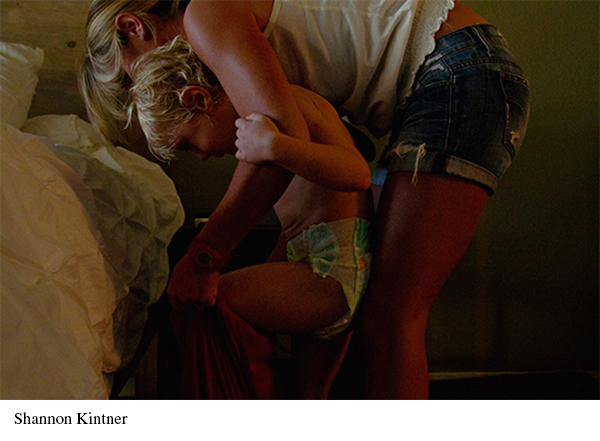Shannon Kintner, “Charlie Living with Autism” (Student Visual Essay)
Instructor's Notes
To assign the questions that follow this reading, click “Browse More Resources for this Unit,” or go to the Resources panel.
Shannon KintnerStudent Visual Essay
Charlie Living with Autism
In this excerpt from a photo essay, we get a glimpse into the life of Charlie, a five-year-old boy diagnosed with non-severe autism. Shannon Kintner took this series while a student at the University of Texas, though not for a class nor as part of her job at the Daily Texan. She did the project on her own to learn more about autism, to gain experience, and to develop her portfolio, a collection of work that demonstrates one’s interests and abilities.
1
“You go bye-bye?” says Charlie Minto, 5, to Kari Hughes, a behavioral therapist. Charlie was diagnosed with Pervasive Developmental Disorder-Not Otherwise Specified (in lay terms, non-severe autism) in October of this past year. He receives in-home behavior therapy five days a week. When he’s finished with it and ready for playtime, he doesn’t keep it to himself.
2
“No, Charlie, it’s not time for me to go yet,” Hughes responds. In one year, however, Charlie might be saying “bye-bye” to his therapists forever.
3
The Diagnostic and Statistical Manual of Mental Disorders, the guidelines used to diagnose different types of disorders, will be released in its fifth edition in May 2013 with its first set of revisions in seventeen years. While the changes are not yet complete, the proposed new definition of autism may be more rigorous than the current one. Many families are worried that, due to the revised wording of the definition, their loved ones will lose the diagnosis, and with it, their services through state, school, and insurance companies.
4
Mindy Minto, Charlie’s mother, worries that the costs for the behavioral, occupational, and speech therapies that Charlie needs will be prohibitive.“My fear is that he won’t get the help he needs and that he won’t . . . be the Charlie that he can be, he won’t rise to his full potential. And that’s concerning.”
302


303





304
Questions to Start You Thinking
Meaning
What story does the selection of images tell?
The photographer shows Charlie eating with his family, learning with his teacher, and playing with his dog. How does this variety enhance the viewer’s experience?
Autism is a complex condition that can affect language ability, intellectual functioning, and behavioral patterns. Some symptoms often generally linked to autism include repetitive behavior; restricted interests; trouble having easy-flowing, “back-and-forth”-style communications; and difficulty with social interactions, which depend on the ability to read facial expressions and other cues. However, autism, as expressed in individuals, varies a great deal from person to person and from setting to setting, and it changes as a person with autism grows and develops. How does this photo essay help us to better understand—and to put a human face on—a word one often hears: autism?
Writing Strategies
How would you describe the nature of Kintner’s written text? Why do you think that she uses this approach?
What is the effect of Kintner’s title for her photo essay?